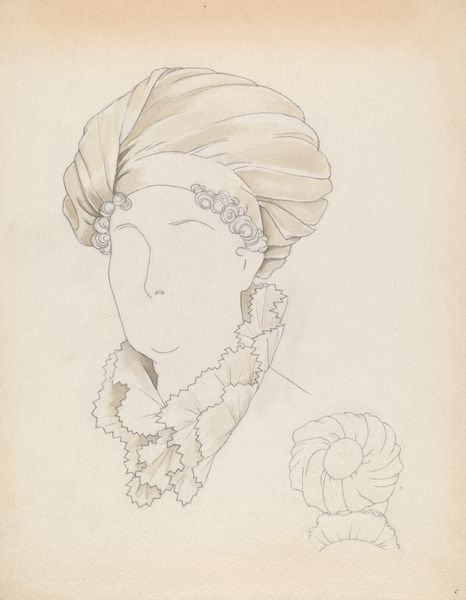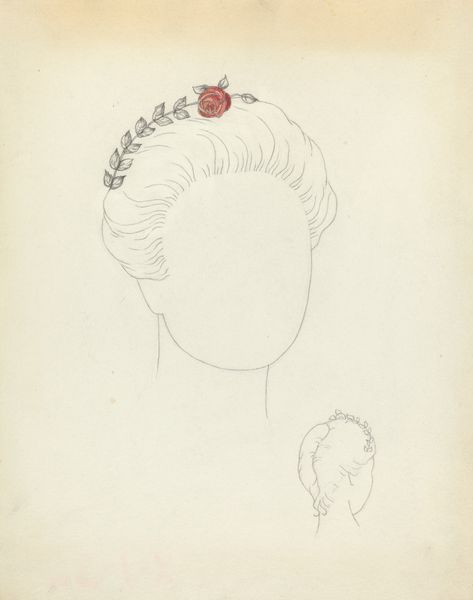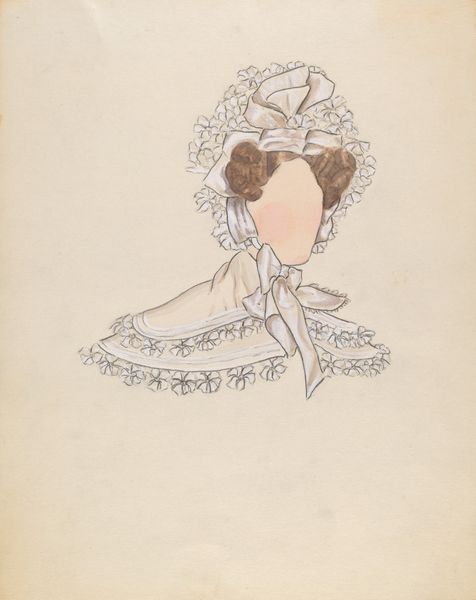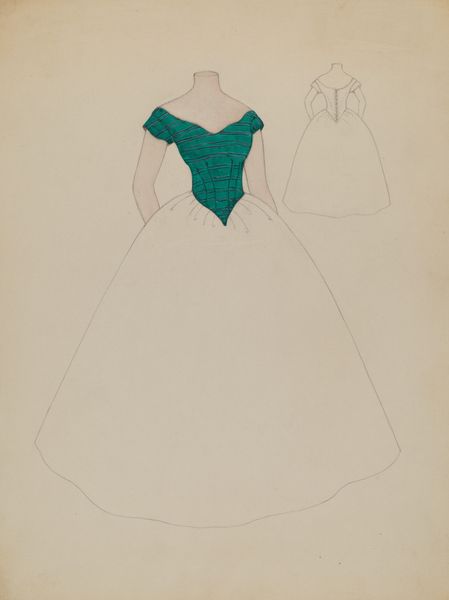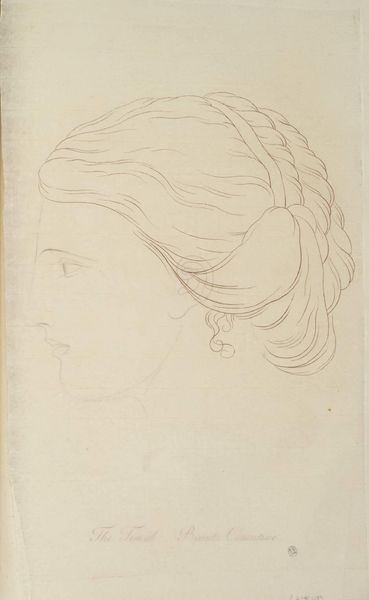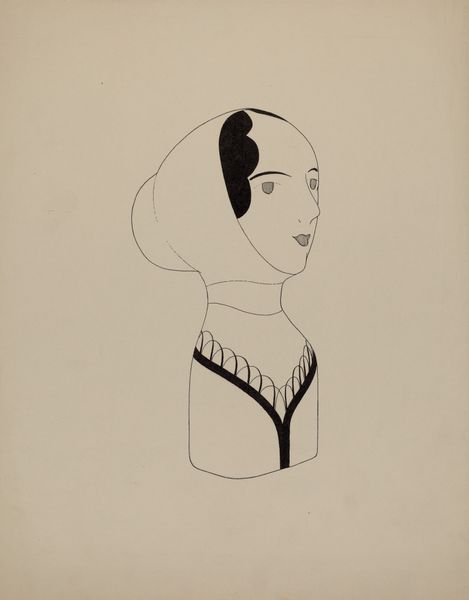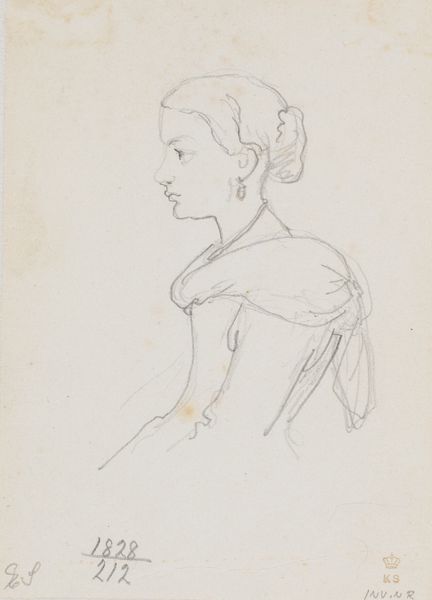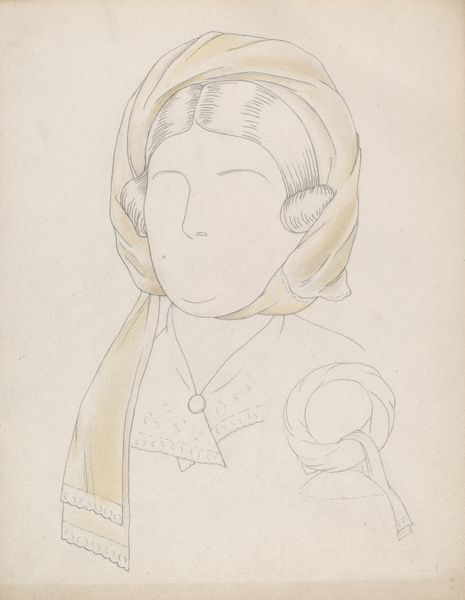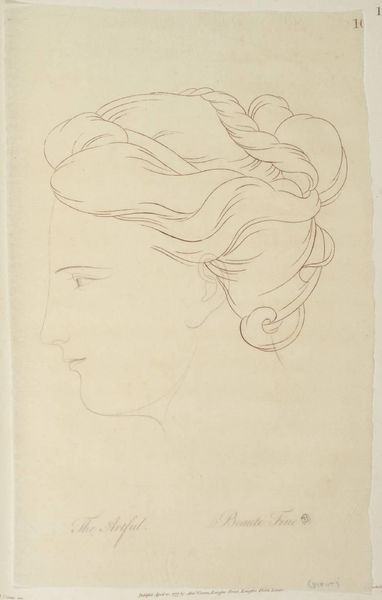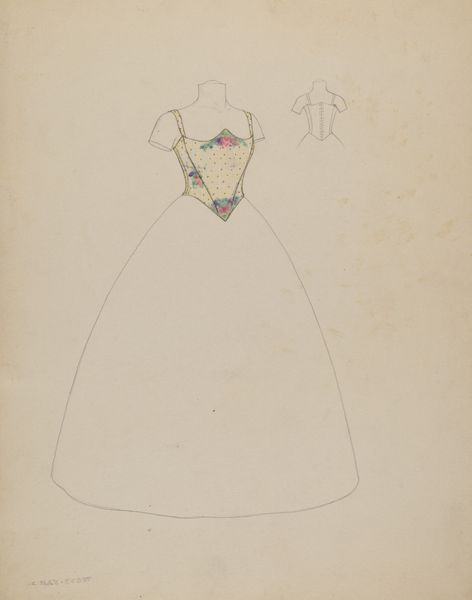
drawing, pencil
#
portrait
#
drawing
#
caricature
#
pencil drawing
#
pencil
#
portrait drawing
Dimensions: overall: 28.9 x 23 cm (11 3/8 x 9 1/16 in.)
Copyright: National Gallery of Art: CC0 1.0
Curator: Well, hello there. What a delightfully curious piece we have here. It's called "Headdress," a pencil drawing from around 1937 by Eva Noe. There’s something immediately intriguing about the incomplete nature of the face. Editor: It certainly feels incomplete, and that sparseness, combined with the meticulous detail in the headdress, creates an odd tension. It calls into question the female subject as merely a foundation or "carrier" for a symbolic crown of sorts. Curator: Yes, the face is just suggested, an outline, really. The artist focuses her attention on the details of the hair and adornment of foliage crowned with a single red rose. Don't you think that the absence almost speaks louder than any complete rendering could? It lets the imagination bloom, like the rose itself. Editor: Indeed, that striking rose commands attention. The choice of what to highlight becomes a loaded statement. It also touches upon the limited autonomy women of the era may have experienced—their identities so heavily intertwined with how they were perceived and adorned, almost a form of social subjugation. Curator: Oof. Subjugation, eh? You always cut straight to the heart of it. But, while that crown could be read as constraint, I choose to read it as ornamentation. Perhaps even empowering. It's just such a beautiful detail in an otherwise understated image. Like a whispered secret, the touch of color. Editor: Beauty and adornment as empowerment can exist alongside the political and societal realities; those nuances and contradictions should never be overlooked when interpreting these drawings from nearly a century ago. The work operates within those contradictions. It hints at the complex and ambivalent status women held then. Curator: Absolutely! It is a gentle suggestion of beauty, a fleeting thought captured in graphite. Editor: Right. Eva Noe gifts us an enduring moment—a silent testament to the evolving complexities of identity, ornamentation, and the quiet narratives embedded within them. Curator: Exactly! A reminder that beauty isn't just what's seen but what's felt, considered, and perhaps even resisted.
Comments
No comments
Be the first to comment and join the conversation on the ultimate creative platform.


